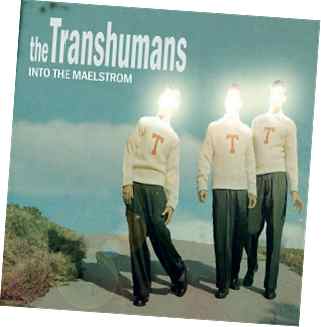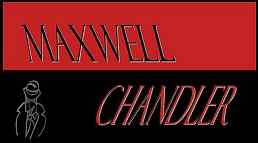
| Maxwell's page sixteen. | ||||||||||
Dream of the Red Door: The Transhumans
Erik Satie (1866-1925) envisioned “furniture music”. The nascent genre was, by half a century, an early precursor to the modern (techno) ambient genre. A concept of music heard in the background adding to the mood but not demanding the full attention of its listeners.
Erik Satie’s music, upon first listen would seem deceptively simple; often made up of a repetitive pattern, somewhat trance inducing. It was this seemingly simplistic approach which made the influence of his music not fully realized nor appreciated in his time. With never any official recognition within his lifetime, he largely remained an artist’s artist.
Directly, he influenced his near contemporaries Maurice Ravel (1875-1937) and Claude Debussy (1862-1918). They took aspects of some of his concepts, incorporating it successfully with what was already in their artistic palette.
The use of non-musical objects, such as gunfire and the clacking of typewriters from his ballet score for Parade would in various ways influence the early wave of modernists in music and literature. Chief architect of the Dadaist, Tristan Tzara (1896-1963) was a fan and friend as was Surrealist “pope” Andre Breton (1896-1966). A group of young composers out of Paris called Le Six gathered together under the wing of Jean Cocteau initially cited Erik Satie as their spiritual forefather. Within a few years of their association some of them would break with their artistic forefather, but all would cherry pick different aspects of what he had been doing, incorporating it into their own works.
Satirical titles and instructions were also often included in Erik Satie’s compositions, early precursor to some of the initial works of John Cage (1912- 1992). Indeed, John Cage’s 4’33 was a piece in three movements in which not a single note was played. Instead the ambient acoustics provided the music and sound. Every venue in which it was performed offering a different version. This element of chance would be emphasized even more in later John Cage works, the “in the moment” not a dissimilar aspect to live jazz solos. The 4’33 piece could be seen as the offspring of Erik Satie’s instruction for the performer to immerse themselves in “utter silence and grave immobilities” and other such directions as he often wrote in the margins of his scores.
Minimalism is another genre which can trace some of its origins back to the solo piano work of Erik Satie. The steady repetitive pulse point or drone upon which a musical pattern is formed then built off of without losing the thread of the main theme can be glimpsed in such Erik Satie pieces as “Gymnopedies” and “Gnossienes”.
In the 1960’s the concept was refined and perfected by composers on both coasts of The United States: Steve Reich, Terry Riley and Phillip Glass who studied under John Cage. Minimalism seems to exist now in the public’s awareness in only one form. There is the oversimplified synth heavy works often used in background of commercials or when showing a montage of things being done on police procedural programs.
No longer being a “new” thing, the possibilities and works are not readily promoted to the more casual listener. This is a musical medium which still, when utilized correctly has much potential. One of the obvious appeals to both composer and listener would be the protean quality inherently found within minimalism’s framework. It can jump not just a music’s genre, but the actual category too, Jazz to modern classical. From a performer’s point of view the ability to improvise ad infinitum over the established pattern allows for much potential.

The Transhumans’ album “Into the Maelstrom” Shows that minimalism is far from played out. Strictly speaking, this trio is not rigidly minimalistic nor jazz. Does it matter? Not at all.
The Transhumans are a trio consisting of Justin Cassidy on electronics, Bob Sterling on drums/electronics and Patrick Rodriguez on electronics. Despite mainly being electronic in nature the music sounds less techno and more improvisational.
I really like this album. I could not just pick it up and listen to it at any time of the day, but that can be said of a lot of the challenging music I treasure; Schoenberg, Cecil Taylor, Ornette Coleman.
Throughout the album are stylistic elements from many aspects of music both jazz and non-jazz.
“Part One: Adrift” could be free jazz. It starts with a voice real low in the mix, giving the effect of eavesdropping on a secret daydream. The drums set up a pattern over which feedback and other electronic blips serve as the “solo” voice. The music does achieve a type of climax with the drums increasing the tempo towards the end. The way the pattern is slowly built over thirteen minutes, gaining momentum in a subtle way is almost reminiscent of various North African pieces of trance music and traditional upper Egypt percussion works.
“Part Two: Descent” is not dissimilar to works by The Aphex Twins (Richard James) from “Selected Ambient Works Volume 2”. A greater sense of tension is achieved not just on this piece but throughout the album by the presence of acoustic drums. It lends an organicness to the overall feel. In no way though do the Transhumans merely ape or rift off of The Aphex Twins. If two people say they had a dream of a red door, chances are the dimensions of the door may be the same, but ornamentation, hue of color and where the door leads will be completely different.
There is some discordance to be found throughout the album, when you are in the mood for this type of music though, it does not detract at all. The Theremin like waves of static in this piece could easily have been an alto during the “New Thing” hay days of the mid sixties.
Often throughout the album there is a repetition, a pattern is established over which the trio further builds. This is not an album to listen to casually or if you have distractions. It is headphone music. This is the best way to notice, as they build their sonic Mandala, one pattern begins to fall apart even as a new one is being formed.
Over all I do enjoy techno-ambient music. Sound wise though, what a lot of albums eventually suffer from is a certain sterileness. All the sounds are digital or sampled in nature and recorded using cutting edge studio perfection which does not age well. Here though, while this is not a lo-fi, neither is it overly done in the vernacular of today’s studio technology. Throughout the album the sound is overall excellent.
“Part Three: Drunken Boat” starts with a sort of trancey bass and hi-hats setting up a pattern over which among other things a sort of electric bowing can be heard. This is probably the most “accessible” track on the album. It best illustrates too, the potential of The Transhumans’ music to be enjoyed by a wide spectrum of music fans providing they do not get bogged down in worrying about genre names. There is what sounds like the slurring of reel to reel tapes and a “tiny voice” which could be someone’s conscious riffing on street life observed from within the head.
Erik Satie always preferred to be called a Phonometrograph (someone who measures and writes down sound) and that may also be one of the best ways to describe this compelling trio.The packaging is professional, but no liner notes, which is actually pretty standard for a lot of techno-ambient music. The cover is good, three figures looking as if they are on their way to a chorus club meeting via an alien abduction.
Jazz for most of it’s life-span has always built off of its past while ever looking ahead. If jazz is going to continue to survive it must shake off its lethargy and embrace not just its past, but what is new now, world music elements. What is going on in the underground utilizing techniques and instruments which do not necessarily come immediately to mind when one thinks of jazz. I still find much joy and inspiration from listening to all the original masters, but maybe the next Charlie Parker is in a cellar club with a midi enabled turntable.
http://www.thetranshumans.com/-Maxwell Chandler-
Maxwell will return with more adventures in sound
![]()
| Click Here |
Page one of Max's Jazz reviews
